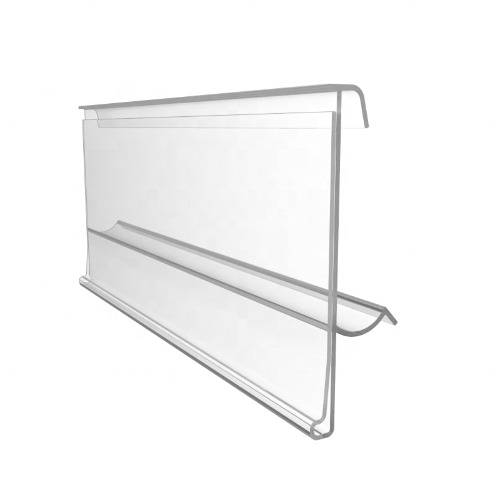Yes, plastic shelf talkers can be effectively used in conjunction with digital signage and other technology to create interactive displays in retail environments. This combination of physical and digital elements can enhance the customer experience, increase engagement, and drive sales. Here are some ways to integrate plastic shelf talkers with technology for interactive displays:
QR Codes and NFC Tags: Attach QR codes or NFC (Near Field Communication) tags to plastic shelf talkers. Customers can scan these codes with their smartphones to access additional product information, videos, reviews, or special promotions.
Digital Shelf Tags: Install digital price tags or e-ink shelf labels alongside plastic shelf talkers. These electronic labels can be remotely updated to display product prices, promotions, and dynamic information, providing real-time pricing and inventory details.
Augmented Reality (AR): Develop AR apps that customers can use to scan shelf talkers and see virtual product demonstrations, try-on experiences (for apparel and cosmetics), or 3D models of products in their own space.
Touchscreen Displays: Incorporate touchscreen displays into your shelf talkers to allow customers to browse through product catalogs, view detailed specifications, or explore related items. This can be particularly effective for high-tech or complex products.
Beacon Technology: Use beacon technology to detect when customers are in proximity to specific shelf talkers. Send them push notifications or relevant information to their smartphones based on their location in the store.
Interactive Kiosks: Install interactive kiosks near product displays that can be controlled by customers. These kiosks can provide product comparisons, user reviews, and in-depth information about products.
In-Store Apps: Develop a store-specific mobile app that customers can download. The app can use GPS or QR code scanning to provide location-based information and offers when customers are near specific shelf talkers.
Voice Assistants: Integrate voice-activated technology into shelf talkers, allowing customers to ask questions or request product details verbally. This can be helpful for hands-free interaction.
Synchronized Lighting: Use smart LED lighting in conjunction with plastic shelf talkers to highlight specific products or promotions. Lighting can change based on customer interactions or time of day.
Product Scanners: Provide handheld or mobile barcode scanners to customers, allowing them to scan product barcodes on shelf talkers to access detailed information or add items to their shopping lists.
Customer Feedback Surveys: Use QR codes to direct customers to digital surveys or feedback forms related to specific products. This can help gather valuable customer insights.
Digital Recommendations: Implement algorithms that analyze customer behavior and provide real-time product recommendations on digital screens or via mobile apps based on their interactions with shelf talkers.
Inventory Alerts: Integrate sensors into the shelf talkers to monitor product inventory. When stock is running low, trigger automatic alerts or notifications to store staff for restocking.
Gamification: Create interactive games or challenges related to products featured on the shelf talkers. Customers can participate for rewards or discounts.



 English
English Español
Español


















